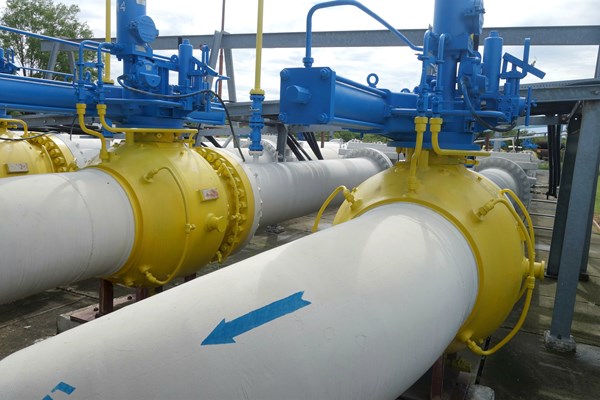Russian media: Ukraine’s gas transit system indispensable for Gazprom
Even in 2020, Gazprom will still need the Ukrainian gas transit system for transit to Europe, since the EU’s ground infrastructure will not yet be ready to receive the gas from Nord Stream 2. By the end of 2019, when the contract for transit through Ukraine expires, Gazprom will be able to pump at most 34 billion of the projected 55 billion cubic meters per annum. A new gas transit contract with Ukraine will thus be unavoidable, Russian news outlet Kommersant writes.
Construction of the Eugal gas pipeline, which is meant to continue the Nord Stream 2 pipeline through Germany, will only be completed by the end of 2020, Kommersant reports, citing a representative of the Gascade company (which has a 50.5% share of the project). According to numerous statements by Gazprom, Nord Stream 2’s designed capacity of 55 billion cubic meters per annum is scheduled to be brought into use by the end of 2019. However, by this time only the first of the two Eugal lines will be built. This will make it possible to transport the 9.9 billion cubic meters from Lubmin, where Nord Stream 2 meets dry land in Eastern Germany (the Gaspool zone), as well as another 21 billion cubic meters up to the Czech border in Deutschendorf. In addition, Gazprom will be able to transport another 2.7 billion cubic meters to the Netherlands using the existing Nel pipeline. Thus, practically, in 2020 Gazprom will be able to utilize at most 34 billion cubic meters of Nord Stream 2’s capacity. The Russian monopoly will only be able to utilize Nord Stream 2’s full capacity once the second Eugal line is activated. Gazprom refused to comment on the situation.
On the whole, the timeline corresponds to the construction of the first Nord Stream.
At that stage, the Opal pipeline, which played the same role as Eugal (transporting gas from northern Germany to the Czech Republic), was activated with a one year interval between the first and second lines – autumn 2011 and 2012 respectively. However, in this case the construction dates are tied to the end of the transit contract with Ukraine, which expires on December 31, 2019. Since it will not be possible to fully utilize Nord Stream 2 in its first year of implementation, Gazprom will have no theoretical way to avoid a new gas transit agreement with Ukraine, which would cover 2020 at least.
In 2017, Gazprom pumped 93 billion cubic meters of gas through Ukraine. Even if Gazprom completely utilizes the maximum capacity of Nord Stream 2 and manages to construct both lines of the Turkish Stream (at 15.75 billion cubic meters), the company will still have to pump at least 30 billion cubic meters through Ukraine in 2020 in order to meet the current demand for Russian gas in Europe. However, Gazprom is unlikely to manage to build the pipelines in the Balkans in order to transport gas to the EU from the second line of the Turkish Stream. The construction of even a small main gas pipeline will last at least one and a half years, and Bulgaria, Serbia and Hungary have not yet begun the authorization process. It is likely that at the start of 2020, Gazprom will only be able to use the Turkish Stream to supply Turkey’s needs, reducing the transit through Ukraine by about 16 billion cubic meters. Thus Gazprom will still need to pump 43 billion cubic meters through Ukraine in 2020. Otherwise the company will have to break long-term contracts with consumers, which could result in fines and the loss of billions of dollars.
All of these estimates concerning the necessary volume of Ukrainian transit were made on the basis of the current level of demand for Russian gas in Europe, but in the coming years this demand may grow. If the Dutch government decides in March to reduce extraction from the EU’s largest deposit in Groningen from 21.6 billion to 12 billion cubic meters, as advised by the regulator after the earthquakes at the start of the year, then the Netherlands’ import demand will grow by 10 billion cubic meters per annum. Even if Gazprom only takes half of the newly freed up market, the Ukrainian route will be the only option for transporting the extra 5 billion cubic meters.
